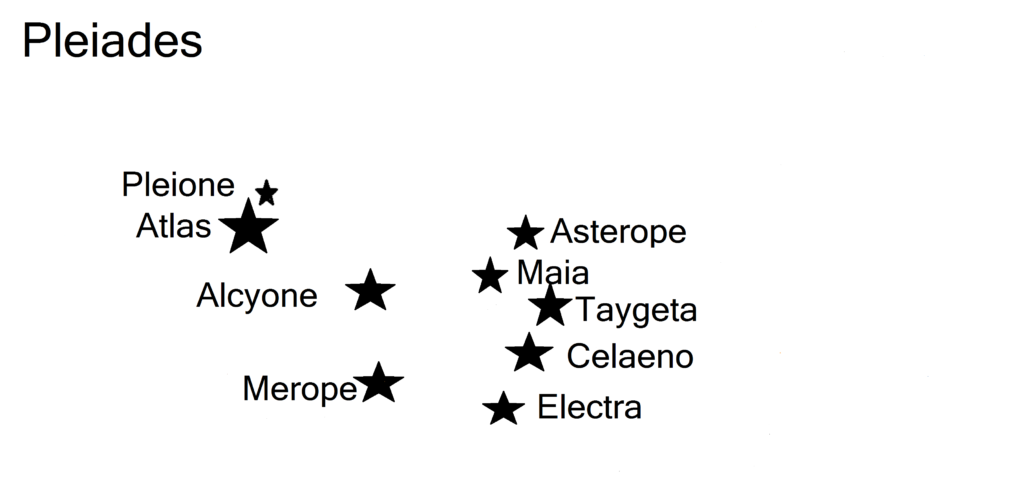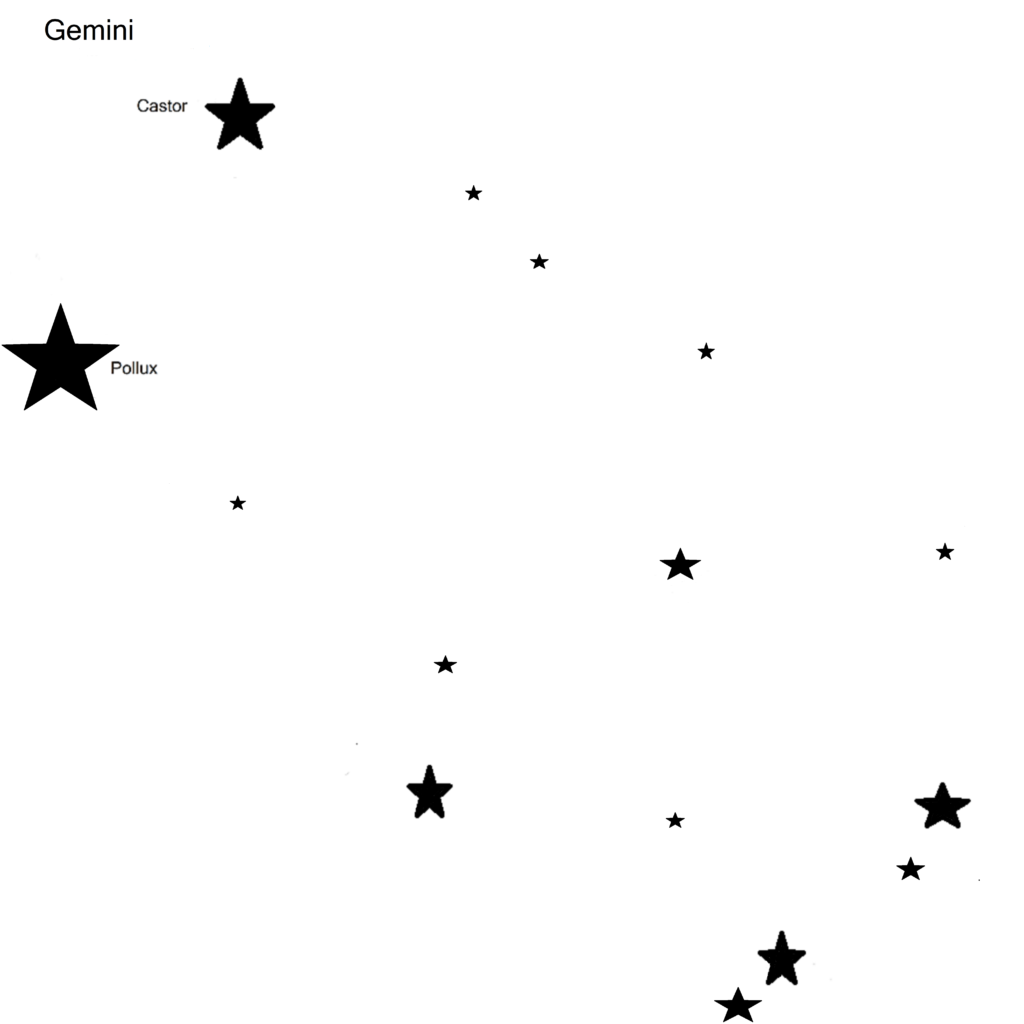Night Sky: Pleiades, Gemini
by Dee Sharples –
Spring is on the way. On Sunday, March 11 at 2:00 AM, clocks will be turned ahead one hour to begin Daylight Saving Time. There’ll be less daylight in the early morning but more in the evening.
The vernal equinox, the official first day of spring, arrives at 12:15 PM on Tuesday, March 20. The number of daylight hours is gradually increasing and on the first day of spring, day and night will be almost equally divided with12 hours and 9 minutes of daylight and 11 hours and 51 minutes of darkness.
There’s still time to view the beautiful constellation Orion the Hunter before it sets in the western sky. During the last week in February and the first week in March, look for it high in the southwestern sky around 8:00 PM. Orion is easily recognized by the three bright stars spaced equal distance apart which comprise his belt. The red-giant star Betelgeuse is high above and to the left of the belt stars marking one of Orion’s shoulders. Three bright white stars join Betelgeuse in forming a very large slightly skewed rectangle framing the belt stars and forming the outline of his body.
 Look above and to the right of Orion about 40 degrees (4 fist widths) for a beautiful open star cluster embedded in a hazy cloud of nebulosity. This is the Pleiades, also known as the Seven Sisters. There are 3,000 stars in this cluster but in Greek mythology the nine brightest stars represent the seven sisters (Maia, Electra, Alcyone, Taygete, Asterope, Celaeno and Merope) and their parents Atlas and Pleione. How many of the nine stars can you see with your naked eye?
Look above and to the right of Orion about 40 degrees (4 fist widths) for a beautiful open star cluster embedded in a hazy cloud of nebulosity. This is the Pleiades, also known as the Seven Sisters. There are 3,000 stars in this cluster but in Greek mythology the nine brightest stars represent the seven sisters (Maia, Electra, Alcyone, Taygete, Asterope, Celaeno and Merope) and their parents Atlas and Pleione. How many of the nine stars can you see with your naked eye?
For a breathtaking sight, view the Pleiades through binoculars which will show its distinct shape of a miniature dipper. The stars in this cluster are gravitationally bound together so they are moving as a group through space. The Pleiades cluster is one of the closest to Earth and lies about 444 light-years away. If it were possible to travel on a spaceship at the speed of light (186,000 miles per second), the journey would take 444 years.
 Around 9:00 PM look almost straight up for the constellation Gemini the Twins. The two brightest stars represent twin brothers Castor and Pollux. Fainter stars extending down and toward the west from the two brighter stars depict the legs of the brothers. Castor which looks like one star is actually six stars – three sets of double stars all revolving in a complicated path around a common point within the grouping.
Around 9:00 PM look almost straight up for the constellation Gemini the Twins. The two brightest stars represent twin brothers Castor and Pollux. Fainter stars extending down and toward the west from the two brighter stars depict the legs of the brothers. Castor which looks like one star is actually six stars – three sets of double stars all revolving in a complicated path around a common point within the grouping.
There’s always something interesting to see in the night or early morning sky. Since we have no control over the weather, take advantageous of the times when the sky is clear to look up. A great source on the internet that forecasts when the sky will be cloud-free within a 24-hour period is “Clear Sky Chart” which can be found at http://www.cleardarksky.com/c/WolkObNYkey.html?1
This particular link will take you to the Wolk Observatory in Ionia, NY where the Astronomy Section of the Rochester Academy of Science has a dark sky observing site. To search for an area closer to where you live, go to the green box in the upper right corner of the page – Other Charts. Next to Within 60 miles, click on List to see other reporting locations.